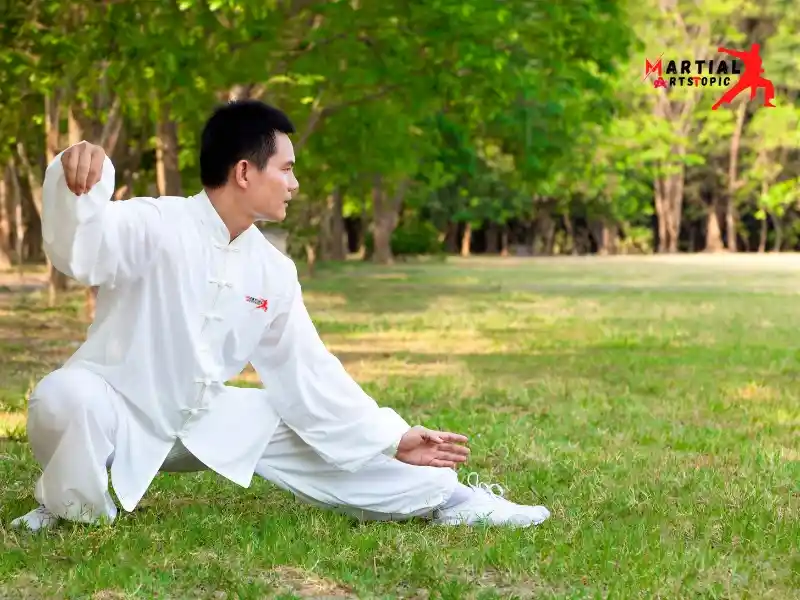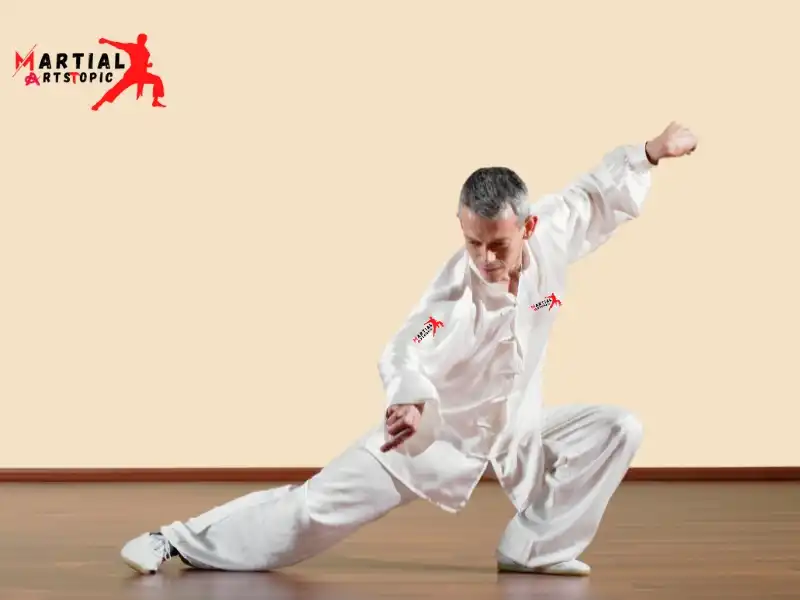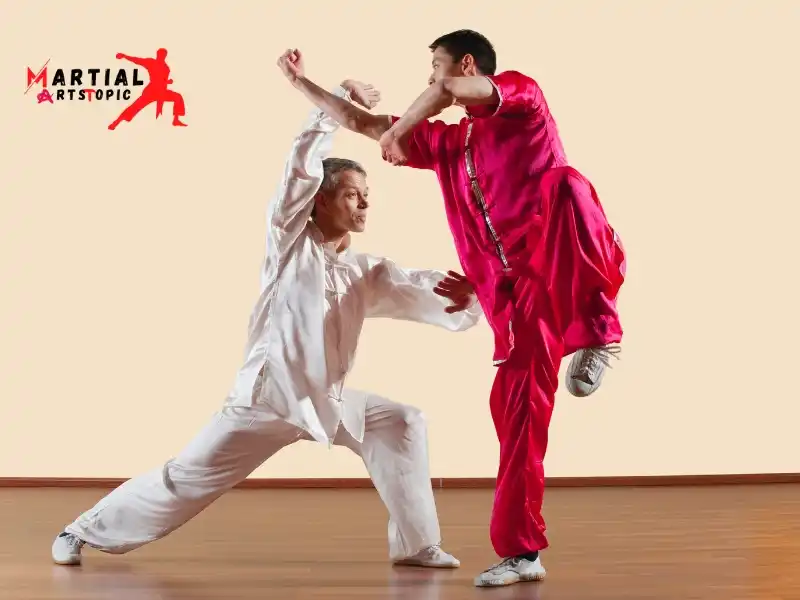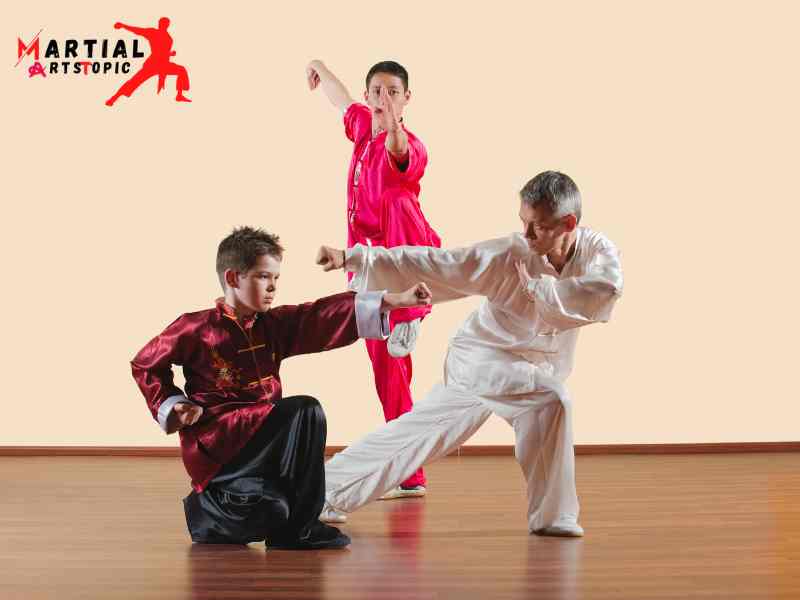
Unveiling the Intricate Art of Baji Quan Kung Fu
Unveiling the intricate art of Baji Quan, also known as Baji Quan Kung Fu, is a fascinating journey into the world of traditional Chinese martial arts. Baji Quan, with its powerful and explosive techniques, has been practiced for centuries and continues to captivate martial arts enthusiasts worldwide. This dynamic and versatile style emphasizes close-range combat, utilizing quick and decisive movements to overwhelm opponents. Whether you’re drawn to its robust punches, agile footwork, or its deep-rooted cultural significance, exploring the art of Baji Quan is sure to inspire and challenge practitioners at every level. Whether you’re a seasoned martial artist or a newcomer to the world of Kung Fu, Baji Quan offers a rich and rewarding path for personal growth and mastery in the martial arts.
The Techniques of Baji Quan
At the core of Baji Quan are its distinctive techniques, which are characterized by their direct, powerful, and efficient nature. Practitioners of Baji Quan are trained to deliver devastating strikes from close quarters, utilizing a combination of linear and circular movements to generate incredible force.
The signature moves of Baji Quan include the “sinking elbow strike,” “crushing fist,” and “body-crushing strikes,” all of which exemplify the art’s emphasis on overwhelming power and speed. Through relentless practice and dedication, students of Baji Quan hone their ability to execute these techniques with precision and fluidity, embodying the essence of this formidable martial art.
The Philosophy of Baji Quan
Beyond its physical techniques, a profound philosophical framework that shapes the mindset and approach of its practitioners underpins Baji Quan. Central to the philosophy of Baji Quan is the concept of “sinking” and “expanding,” which reflects the art’s emphasis on grounding oneself while projecting force outward.
Furthermore, Baji Quan espouses the principles of adaptability, resilience, and balance, encouraging practitioners to harmonize their inner strength with external movements. This holistic approach to martial arts fosters a deep sense of mindfulness and self-awareness, transcending the mere physical aspects of combat.
The Legacy of Baji Quan
As we unravel the intricate art of Baji Quan, it is essential to acknowledge the profound legacy that this martial art has left on the world stage. With its roots deeply embedded in Chinese history and culture, Baji Quan has gained recognition for its effectiveness in combat and its profound impact on the development of martial arts.
Today, Baji Quan continues to captivate and inspire martial artists and enthusiasts worldwide, serving as a testament to the enduring legacy of traditional Chinese martial arts. Its influence can be seen in various contemporary combat disciplines, as elements of Baji Quan have been integrated into modern training methodologies and fighting styles.
What is Baji Quan Kung Fu?
Baji Quan, also known as Eight Extremes Fist, is a traditional Chinese martial art that originated in Hebei province. Its explosive, close-range techniques and distinctive footwork characterize this powerful style. Baji Quan emphasizes the use of the entire body in its movements, making it a formidable art for self-defense and combat. Practitioners of Baji Quan focus on developing strength, speed, and agility, as well as cultivating a deep understanding of body mechanics and martial principles. The practice of Baji Quan offers a holistic approach to physical and mental development, making it a valuable martial art for anyone seeking to improve their overall well-being and self-defense skills.
Origins of Baji Quan

Baji Quan Kung Fu, also known as Baji boxing, is a traditional Chinese martial art that originated in the Hebei Province of China. The literal translation of Baji Quan is “Eight Extremities Fist,” which reflects the powerful and explosive nature of this martial art. Baji Quan is characterized by its dynamic, close-range techniques and emphasis on aggressive, quick strikes.The history of Baji Quan can be traced back to the late Ming Dynasty (1368-1644) and the early Qing Dynasty (1644-1912). It was developed as a practical fighting system for military personnel and bodyguards, making it well-suited for real-life combat situations. Over the centuries, Baji Quan has developed and diversified, with different lineages and variations emerging.
The origins of Baji Quan are steeped in legend and folklore, with various stories attributing its creation to different individuals. One popular legend attributes the development of Baji Quan to Wu Zhong, a military officer known for his expertise in martial arts. Another legend credits Li Shuwen, a renowned martial artist, as the founder of Baji Quan. While the exact origins may be shrouded in myth, what remains undeniable is the impact and influence of Baji Quan as a formidable martial art.
History of Baji Quan
Throughout its history, Baji Quan has been closely associated with military training and combat. Bodyguards and soldiers traditionally practiced it, and its effectiveness in close combat situations made it a favored choice among martial artists. Over time, Baji Quan developed and diversified, with different lineages and variations emerging across China.
During the early 20th century, Baji Quan gained popularity as a formidable martial art and was further developed and promoted by influential masters such as Li Shuwen and Liang Zhenpu. Its reputation as a practical combat system continued to grow, and it eventually spread beyond China to other parts of the world.
Today, Baji Quan remains an integral part of traditional Chinese martial arts, treasured for its emphasis on powerful strikes, joint locks, and explosive footwork. Its rich history and deep-rooted cultural significance continue to attract practitioners and enthusiasts from diverse backgrounds.
Essential Techniques and Forms
Baji Quan, also known as “Eight Extremes Fist,” is a powerful martial art that originated in China. Its explosive, short-range techniques and distinctive footwork characterize it. The essential techniques of Baji Quan include powerful punches, elbow strikes, and kicks, along with agile footwork and evasive movements. Practitioners also focus on developing firm stances and powerful, fluid body movements. The forms of Baji Quan are an integral part of training, with each form emphasizing specific techniques, stances, and strategies. By mastering the essential techniques and forms of Baji Quan, practitioners can enhance their strength, agility, and combat skills while embodying the rich tradition and philosophy of this martial art.
Essential Techniques
- Baji Quan Stance: The foundation of Baji Quan lies in the sturdy and rooted stance, providing stability and agility for executing powerful strikes and evasive maneuvers. A slightly lowered center of gravity characterizes the stance, with the feet firmly planted and the body poised for swift movement.
- Demonic Face Palm: This striking technique exemplifies the assertive nature of Baji Quan, utilizing the palm of the hand to deliver a powerful blow to the opponent’s face or upper body. The execution of this technique requires precise timing and coordination of body mechanics to maximize impact.
- Crushing Fist: As one of the signature techniques of Baji Quan, the Crushing Fist embodies the art’s emphasis on explosive power and close-range combat. This technique involves a rapid and forceful punch aimed at the opponent’s vital points, often delivered with a spiraling motion to generate maximum force.
- Sinking Elbow Strike: A fundamental close-quarters technique in Baji Quan, the Sinking Elbow Strike is executed with a downward and inward thrust of the elbow, targeting the opponent’s torso or limbs. This technique emphasizes the art’s utilization of body weight and structural alignment for effective striking.
Essential Forms
- Baji Quan Basic Form: The foundational form of Baji Quan encompasses a series of movements and stances that introduce practitioners to the fundamental principles and dynamics of the art. Through the practice of this form, students develop strength, coordination, and a deeper understanding of Baji Quan’s essence.
- Liu Da Kai (Six Big Opening) Form: This advanced form in Baji Quan showcases the art’s intricate footwork, dynamic body movements, and strategic positioning. The Liu Da Kai Form challenges practitioners to master fluid transitions between techniques and cultivate heightened awareness of spatial dynamics.
- Baji Quan Two-Person Sparring Set: This interactive form embodies the combative nature of Baji Quan, allowing practitioners to engage in controlled sparring scenarios that simulate real-world combat situations. Through the practice of this form, students refine their timing, adaptability, and tactical decision-making.
Training and Conditioning

When it comes to training and conditioning for martial arts, it’s crucial to focus on a well-rounded approach to developing strength, flexibility, and endurance. For practitioners of Baji Quan, incorporating specific exercises and drills tailored to this traditional Chinese martial art is essential. Conditioning exercises such as stance training, striking drills, and specialized footwork techniques can help to enhance the power and fluidity of movements associated with Baji Quan. Additionally, integrating functional strength training and flexibility exercises can further support overall performance and injury prevention. By prioritizing a comprehensive training regimen that aligns with the principles of Baji Quan, practitioners can cultivate the physical attributes and skills necessary for mastery in this unique martial art.
Training Tips for Baji Quan
- Focus on Basic Stances and Footwork: Mastering the fundamental stances and footwork is crucial for building a firm foundation in Baji Quan. Practice your horse stance, bow stance, and empty stance to develop stability, balance, and agility.
- Emphasize Explosive Power: Baji Quan is known for its explosive, powerful movements. Work on generating maximum power in your strikes and movements by incorporating strength training, plyometrics, and explosive drills into your workout routine.
- Develop Fluidity and Coordination: Baji Quan involves intricate hand techniques and dynamic body movements. Practice flowing transitions between techniques to improve your overall fluidity and coordination.
- Incorporate Internal Training: Baji Quan integrates internal martial arts principles, emphasizing the cultivation of internal energy (qi) and mindfulness. Explore qigong, meditation, and breathing exercises to enhance your internal power and mental focus.
Conditioning Techniques for Baji Quan
- Cardiovascular Conditioning: Engage in cardiovascular exercises such as running, cycling, or jump rope to improve your endurance and stamina, which are essential for sustaining the dynamic movements of Baji Quan.
- Strength Training: Build strength in your upper body, lower body, and core muscles to support the powerful strikes and movements in Baji Quan. Incorporate weight training, bodyweight exercises, and resistance training into your regimen.
- Flexibility and Mobility: Enhance your flexibility and mobility through stretching, yoga, and mobility drills. Baji Quan requires a wide range of motion, so maintaining flexibility is key for executing techniques effectively.
- Endurance Drills: Practice high-intensity interval training (HIIT) and endurance drills to simulate the intensity of Baji Quan movements. This will help improve your anaerobic capacity and resilience during training sessions.
The Benefits of Practicing Baji Quan
Practicing Baji Quan offers a wide range of benefits for both the mind and body. This traditional Chinese martial art, also known as Baji Boxing, focuses on explosive, short-range power and is renowned for its effectiveness in self-defense. Regular practice of Baji Quan can improve overall physical fitness, agility, and flexibility. Additionally, it can enhance mental discipline, focus, and resilience. The dynamic movements and techniques of Baji Quan also help in stress reduction and promote a sense of inner calm. Whether you’re looking to build strength, improve coordination, or cultivate a sense of inner peace, Baji Quan provides a holistic approach to personal growth and well-being.
Physical Benefits
- Strength and Conditioning: Baji Quan involves powerful, explosive movements that engage multiple muscle groups, leading to improved strength and overall conditioning.
- Flexibility and Coordination: The intricate techniques of Baji Quan promote flexibility and coordination, enhancing agility and balance.
- Cardiovascular Health: The dynamic nature of Baji Quan training contributes to improved cardiovascular endurance and overall fitness.
Mental Benefits
- Focus and Concentration: The practice of Baji Quan requires deep concentration, leading to enhanced mental focus and clarity.
- Stress Relief: Engaging in the rhythmic and controlled movements of Baji Quan can serve as meditation, helping to alleviate stress and promote relaxation.
- Discipline and Self-Control: Through dedicated practice, practitioners of Baji Quan develop a sense of discipline and self-control, which can positively affect various aspects of their lives.
Spiritual Benefits
- Connection to Tradition: Baji Quan has a rich history and cultural significance, providing practitioners with a sense of connection to ancient traditions and philosophies.
- Inner Harmony: The holistic approach of Baji Quan encourages practitioners to cultivate inner harmony and balance, fostering a deeper connection between mind, body, and spirit.
- Personal Growth: Practicing Baji Quan offers opportunities for personal growth and self-discovery, leading to a greater sense of purpose and fulfillment.
Baji Quan in Practice
Baji Quan, also known as Eight Extremes Fist, is a traditional Chinese martial art that emphasizes explosive, short-range power and is renowned for its unique elbow and shoulder strikes. When practicing Baji Quan, it’s essential to focus on cultivating internal strength, stability, and agility. The art’s distinctive footwork and body positioning are designed to maximize the practitioner’s power and efficiency in combat. Incorporating Baji Quan into your training regimen can enhance your overall martial arts skills, promoting physical fitness, mental discipline, and self-defense proficiency. Whether you’re a seasoned martial artist or a beginner, exploring the dynamic techniques of Baji Quan can truly elevate your martial arts journey.
Solo Forms and Drills

Solo practice is fundamental to mastering Baji Quan. The solo forms and drills in Baji Quan emphasize powerful, explosive movements combined with intricate footwork. Practitioners execute a series of techniques that simulate combat scenarios, allowing for the development of speed, precision, and strength.
The key to effective solo practice in Baji Quan lies in understanding the core principles of the art. It involves cultivating internal power through coordinated breath control, body alignment, and mental focus. By repeatedly performing the solo forms and drills, practitioners enhance their overall physical conditioning and internal energy cultivation.
Partner Training and Sparring
Partner training and sparring are integral components of Baji Quan that further enhance practical application. Through partner drills, practitioners learn to implement the techniques they have honed through solo practice in a dynamic and interactive setting. This aspect of training sharpens reflexes, timing, and adaptability, crucial for real-life combat scenarios.
Sparring in Baji Quan involves applying the art’s techniques in a controlled yet realistic manner. It provides practitioners with the opportunity to test their skills against resisting opponents, thereby refining their ability to strategize, counter, and execute techniques under pressure. This dynamic form of training fosters a deeper understanding of the art’s principles and their practicality in combat situations.
Conclusion
Baji Quan Kung Fu: The Ancient Art of Chinese Martial Arts is a powerful and intricate martial art that emphasizes explosive, close-range techniques and fluid movements. Its foundation in traditional Chinese martial arts philosophy and its practical applications make it a valuable discipline for self-defense and personal development. Whether you’re drawn to its dynamic forms, its emphasis on internal energy cultivation, or its rich history, Baji Quan offers a unique and rewarding journey for martial arts enthusiasts. By delving into the principles and techniques of Baji Quan, practitioners can gain strength, agility, and mental discipline, ultimately embodying the art’s timeless spirit of resilience and adaptability.
